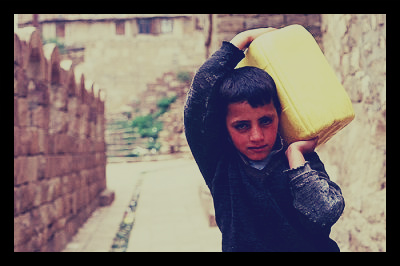5 Facts about Poverty in Yemen

As one of the poorest countries in the Middle East, Yemen is currently faced with some of the most extreme poverty issues in the world. There are several issues that are unique to Yemen that contribute to this magnitude of poverty, issues that are on track to only get worse unless direct action is taken to mitigate these circumstances. If basic problems, such as lack of access to water, are not properly addressed, other matters, such as sub-par literacy rates, will continue to plague the region and exacerbate poverty in Yemen.
Top 5 Facts about Poverty in Yemen
1. Yemen’s population stands at 25.4 million and approximately 54% of those people live in poverty. In other words, 54% of the population survives on fewer than 2 dollars per day.
2. Approximately 45% of the population is malnourished.
3. Life expectancy in Yemen is 64 years old, 14 years younger than the average life expectancy in the United States.
4. Major infectious diseases plaguing the country include Bacterial diarrhea, Typhoid fever, Dengue fever and Malaria, all of which are preventable, curable and in some cases largely unheard of anymore in the western world.
5. There is less than 1 physician for every 1,000 people in Yemen.
Major Causes Behind Poverty in Yemen Today
- The dire water shortage: The use of the word ‘dire’ cannot be stressed enough. According to Maplecroft, a global risk analysis organization, Yemen is ranked as the seventh most water-stressed country on the planet. Even though there is a water shortage in Yemen, approximately 90% of the country’s water is put towards its largely ineffective agricultural practices. In Yemen’s capital city, Sana’a, tap water is only available once every four days for its 2 million people. Even worse, in Taiz, a major city in the south, tap water is only available every 20 days. It is estimated that in 10 years, Sana’a will literally run out of water for its citizens.
- On the brink of famine: In mid-2012, several major humanitarian relief organizations issued a warning that 44% of the population’s food needs are not currently being adequately met. Five million of these malnourished Yemeni citizens require emergency aid and immediate action. The warning cited a surge in food and fuel prices and political instability as the cause behind the number of malnourished people doubling since 2009. Though there is food available in some cases, many Yemenis cannot afford to buy nourishment because they have been displaced from their homes due to conflict.
- Lingering political instability: Like most of the Middle East, Yemen felt the effects of the Arab Spring in 2011. The initial uprising was centered on protesting high unemployment, economic conditions and government corruption, which included the then president’s plan to alter the constitution to allow the direct transfer of power to his son. Al-Qaeda also has a presence in the region, which further contributes to political instability. For these reasons and many others, the attempt to reach stability within the government and the region is an ongoing process. After significant fighting and the displacement of hundreds of thousands of citizens, a new president was placed in power after running uncontested in an election. The new president is responsible for overseeing the drafting and implementation of a new constitution and further presidential and parliamentary elections in 2014.
– Colleen Eckvahl
Sources: BBC: Yemen’s President cedes power, BBC: Yemen on brink of food crisis, Green Profit, Maplecroft, The World Bank
